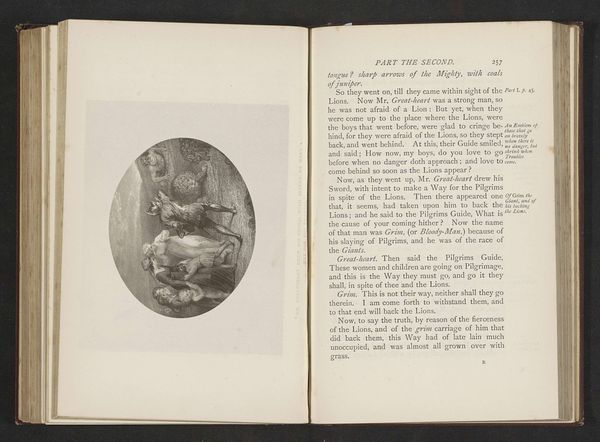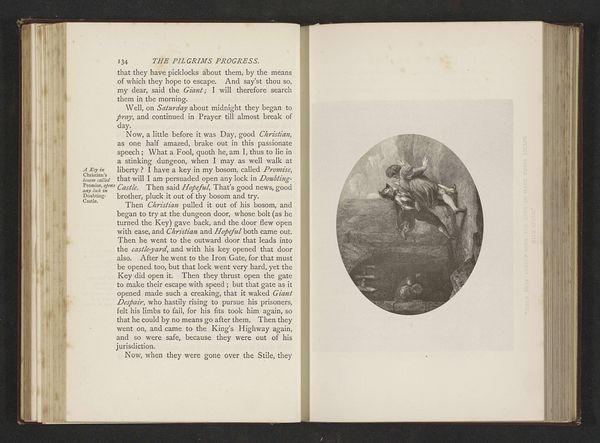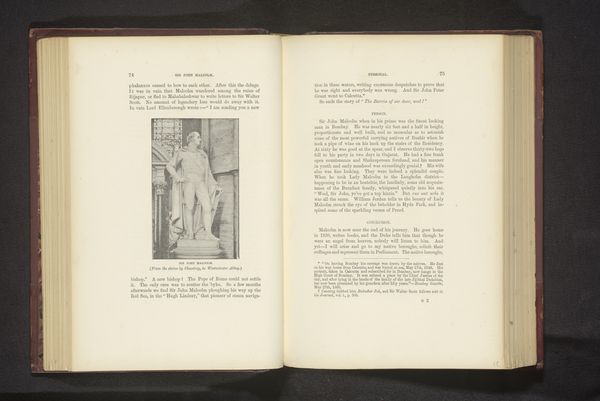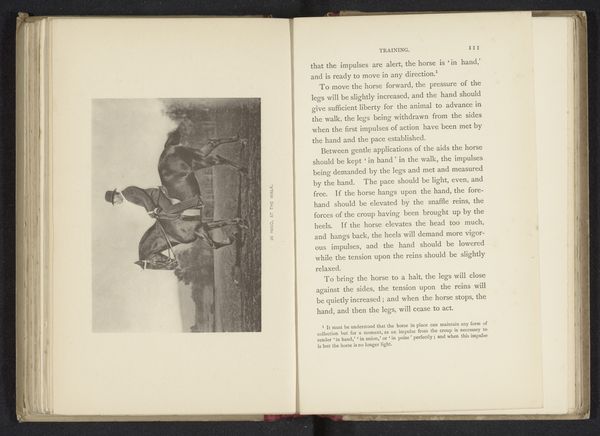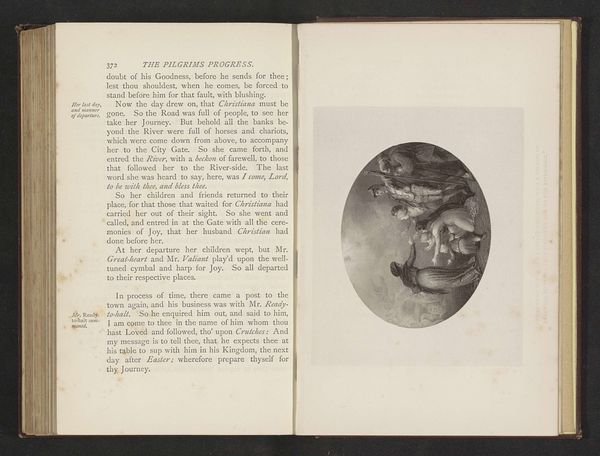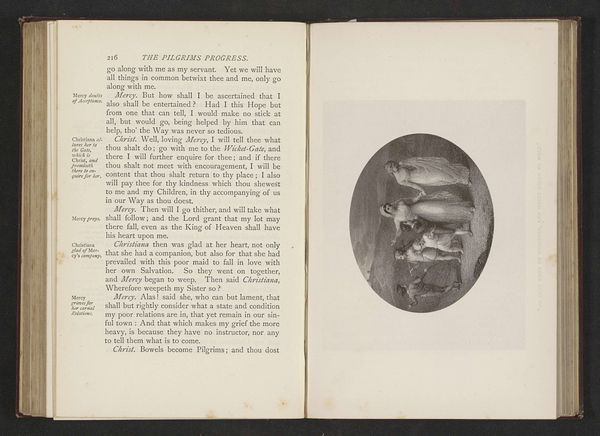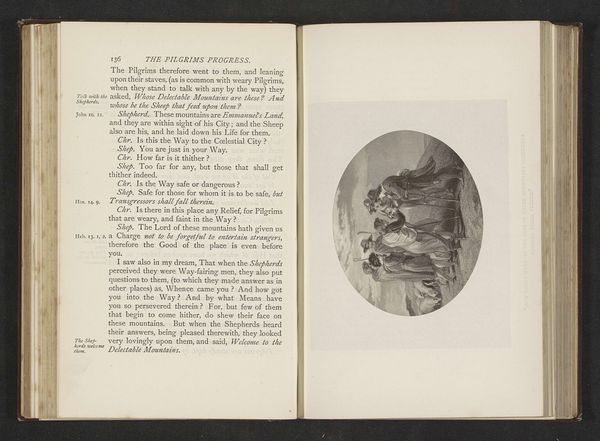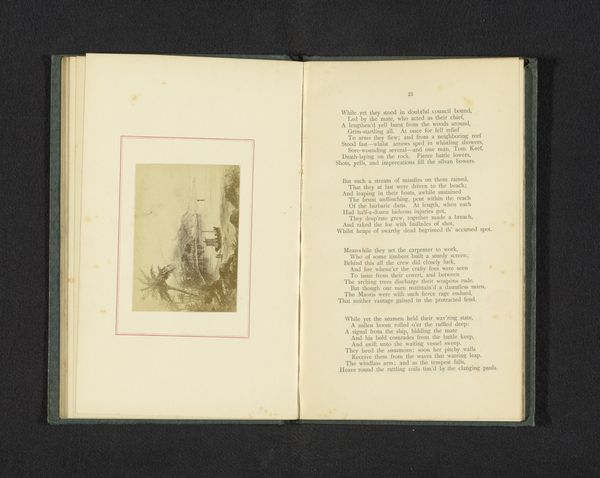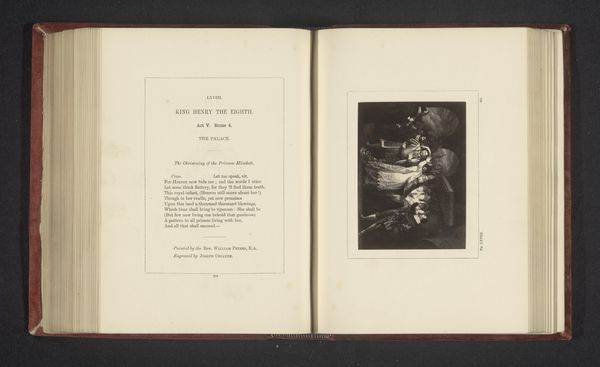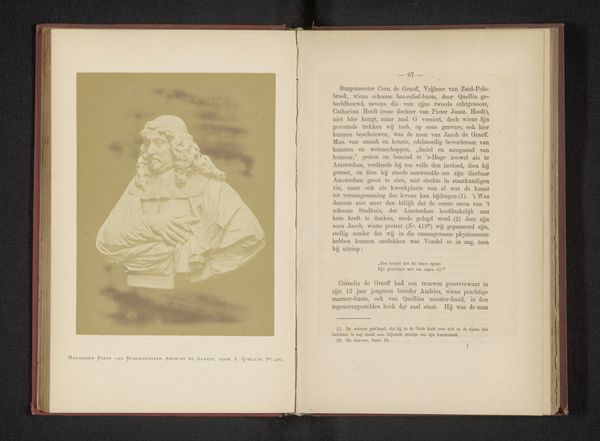
drawing, paper, ink
#
portrait
#
drawing
#
book
#
paper
#
ink
#
academic-art
Dimensions: height 83 mm, width 58 mm
Copyright: Rijks Museum: Open Domain
Curator: We’re looking at an ink drawing entitled "Alfred Tennyson," completed before 1897. It seems to be a reproduction included within a book. Editor: Immediately striking is the figure turned away from us, positioned within a very simply rendered space. There's a loneliness evoked by the composition, almost as if he's receding from the world. The stark ink lines add to the austerity. Curator: Indeed. While it's economical in its execution, there’s a depth of character conveyed even with this rear view. The drawing originates from a sketch made by Edward FitzGerald, an intimate of Tennyson. They belonged to a Cambridge-based group of intellectuals called "The Apostles." So this image acts as a biographical symbol of friendship, remembrance, and an era defined by rich literary culture. Editor: Yes, it's interesting to consider the materiality too. The image exists here reproduced with ink on paper within a printed book. It’s layered, right? It creates a distance, almost like seeing Tennyson through several veils. It mutes some of the directness, which lends the image a different feeling than the original sketch would’ve conveyed. Curator: Exactly, the layers themselves deepen its symbolic value! It also subtly reveals Tennyson as a poet whose work had wide distribution. You can also read something about his personality, though perhaps not what we first assume: he looks away and appears pensive. The visual suggests that he perhaps guarded the mysteries of poetic imagination from public view. Editor: And there's something also so academic about ink, given its presence in the literary arts for writing, illustration, printing—everything. It feels like an assertion that the literary arts are not just intellectual but something rendered from the hand of the artist. Curator: So this intimate glimpse transforms into a monument, made even more poignant through the book’s circulation. An image carrying the legacy of a towering figure from Victorian literary culture. Editor: What began with such austere lines comes across now as a kind of quiet tribute, seen and reproduced for decades since its original creation. A thoughtful memorial, in its own way.
Comments
No comments
Be the first to comment and join the conversation on the ultimate creative platform.

